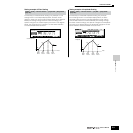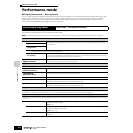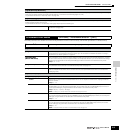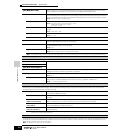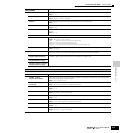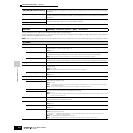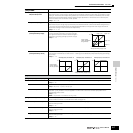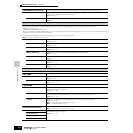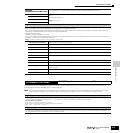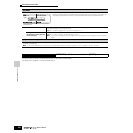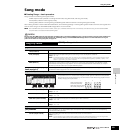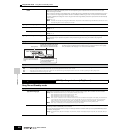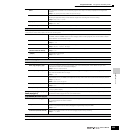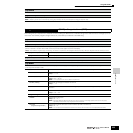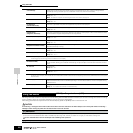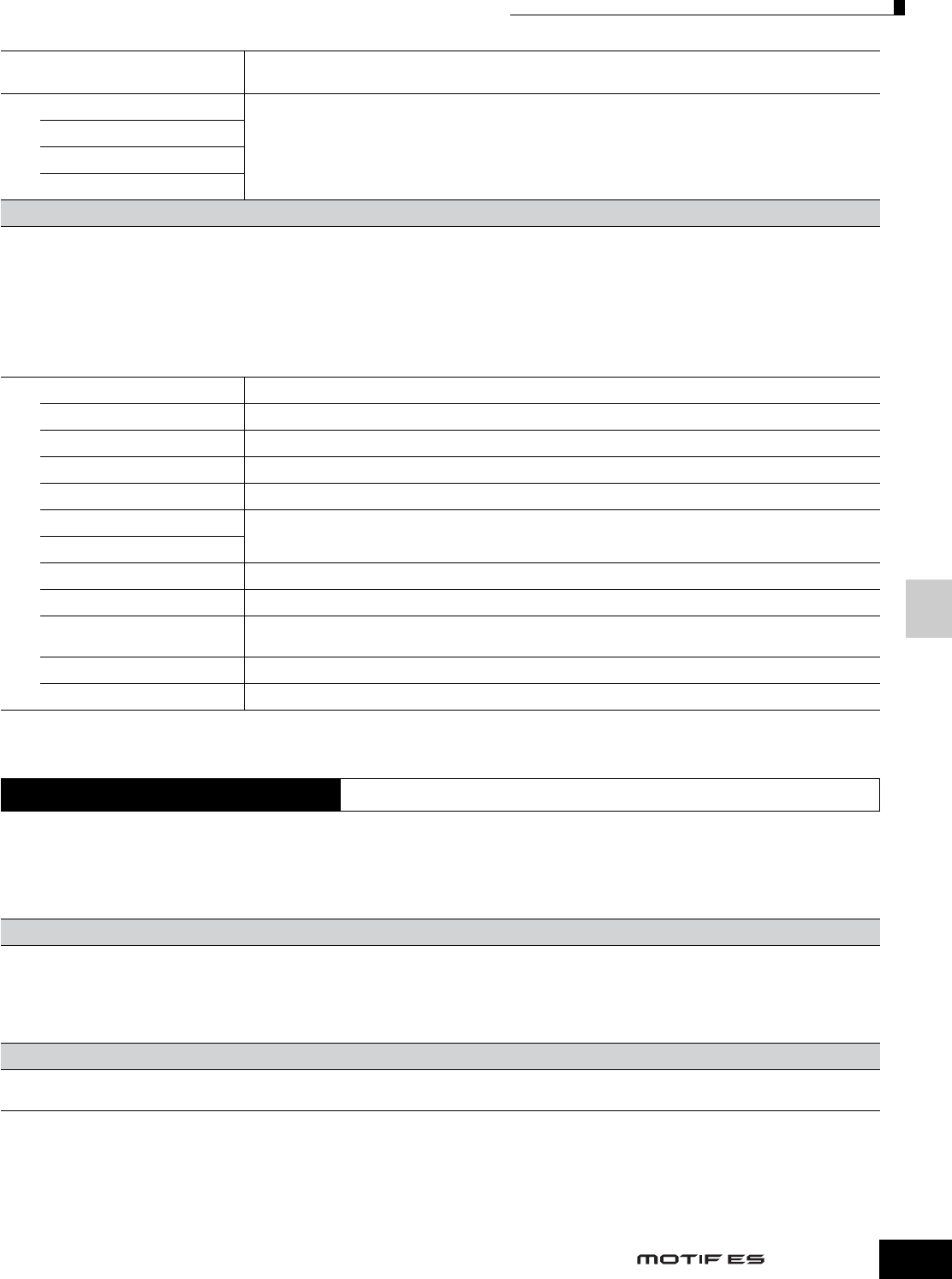
Reference Performance Mode
Performance Job mode
219
Owner’s Manual
The Performance Job mode features several basic operations, such as Initialize and Copy. After setting parameters as required from the
selected display, press the [ENTER] button to execute the Job.
n Among the Audio Parts shown in the Job display, Audio 1 indicates the A/D Input Part. When the optional AIEB2 has been installed to this synthesizer,
Audio 2 indicates the AIEB2 Input Part. When the optional mLAN16E has been installed, Audio 2, 3, 4, and 5 indicate the mLAN Input Parts.
[SF4] AEG
(Amplitude Envelope Generator)
From this display you can set the AEG (Amplitude Envelope Generator) parameters for each Part.
Attack (Attack Time) Determines each parameter of the AEG for each Part. Please note that Sustain Level is not available for the Plug-in
Part.
For details about AEG, see
.
Settings: -64 ~ 0 ~ +63
Decay (Decay Time)
Sustain (Sustain Level)
Release (Release Level)
[F5] RCV SW (Receive Switch)
From this display you can set how each individual Part responds to various MIDI data, such as Control Change and Program Change messages. When the
relevant parameter is set to “on,” the corresponding Part responds to the appropriate MIDI data.
Note that two different display types listed below are provided and you can switch between them by pressing the [SF5] button. Each display type features the
same settings in a different format; use the type you feel most comfortable with.
• Display showing four Parts
• Display showing all parameters for one Part
Keep in mind that since all the available parameters cannot be simultaneously displayed in the four-Part display, you will need to use the cursor controls to scroll
the display in order to see and set the other parameters.
Settings: See below. Parameters marked with * are not available for the Plug-in Part.
CtrlChange (Control Change) Indicates all the Control Change messages.
PB (Pitch Bend) MIDI messages generated by using the Pitch Bend Wheel.
MW (Modulation Wheel) MIDI messages generated by using the Modulation Wheel.
RB (Ribbon Controller)* MIDI messages generated by using the Ribbon Controller.
ChAT (Channel After Touch) MIDI messages generated by pressing and holding the note on the keyboard.
FC1 (Foot Controller 1)* MIDI messages generated by using the optional Foot Controller connected to the rear panel.
FC2 (Foot Controller 2)*
Sus (Sustain) MIDI messages generated by using the optional Footswitch connected to the SUSTAIN jack on the rear panel.
FS (Footswitch)* MIDI messages generated by using the optional Footswitch connected to the ASSIGNABLE jack on the rear panel.
AS1 (Assign1)*, AS2 (Assign2)* MIDI messages generated by using the ASSIGN1 and ASSIGN2 Knobs with both the [PAN/SEND] and [TONE]
lamps turned on.
BC (Breath Controller)* MIDI messages generated by using the optional Breath Controller connected to the BREATH jack on the rear panel.
Exp (Expression) MIDI messages generated by using the optional Foot Controller connected to the rear panel.
Performance Job mode
[PERFORM] → Performance selection → [JOB]
[F1] INIT (Initialize)
This function lets you reset (initialize) all Performance parameters to their default settings. It also allows you to selectively initialize certain parameters, such as
Common settings, settings for each Part, and so on — very useful when creating a completely new Performance from scratch.
Type of parameter to be initialized
All (all settings for the selected Performance are initialized)
Common (Common parameter settings for the selected Performance are initialized)
Part 1 - 4, PLG 1 - 3 (Plug-in Part 1 - 3), Audio 1 - 5
[F2] RECALL (Edit Recall)
If you are editing a Performance and select a different Performance without storing your edited one, all the edits you’ve made will be erased. If this happens, you
can use Edit Recall to restore the Performance with your latest edits intact.



